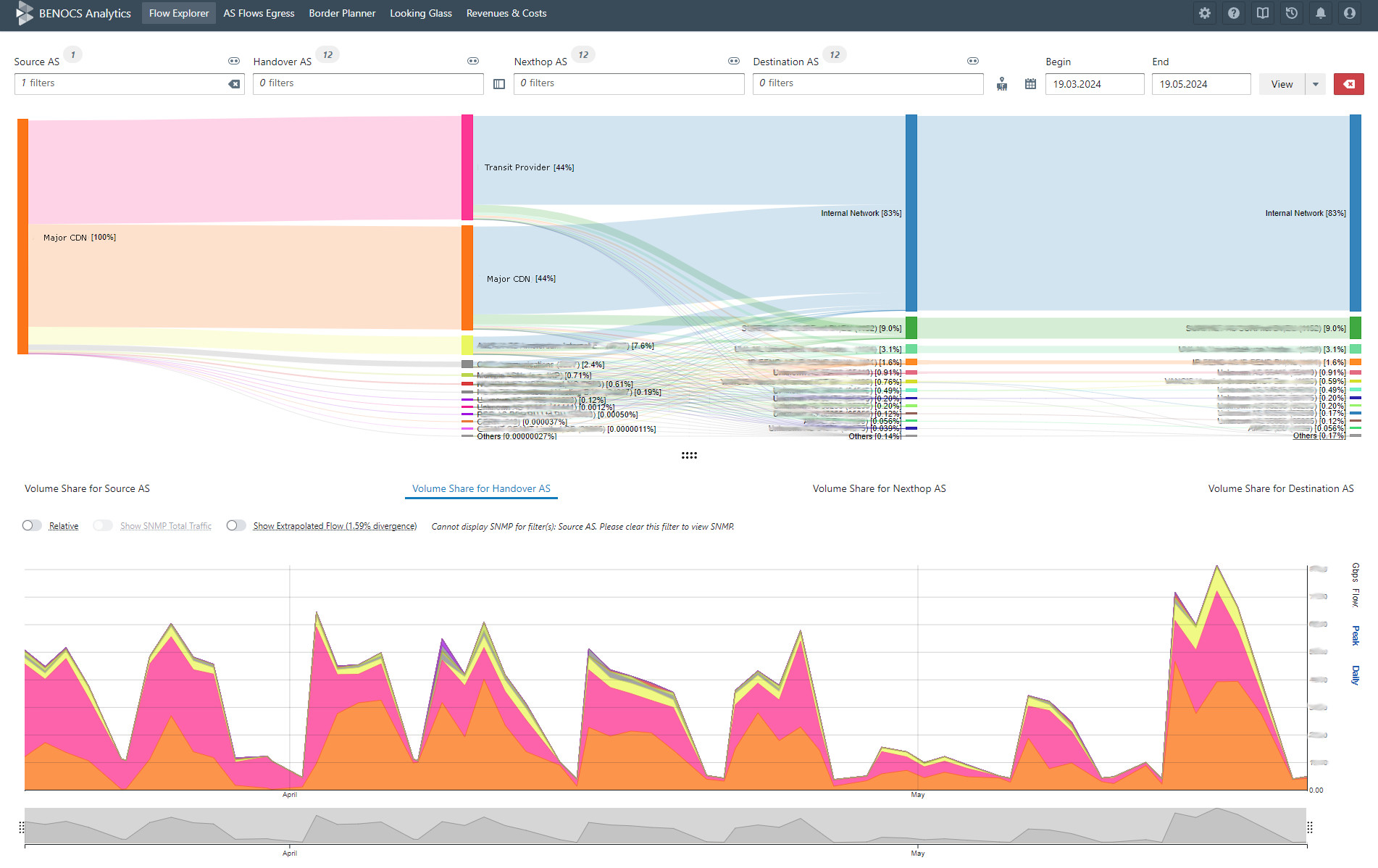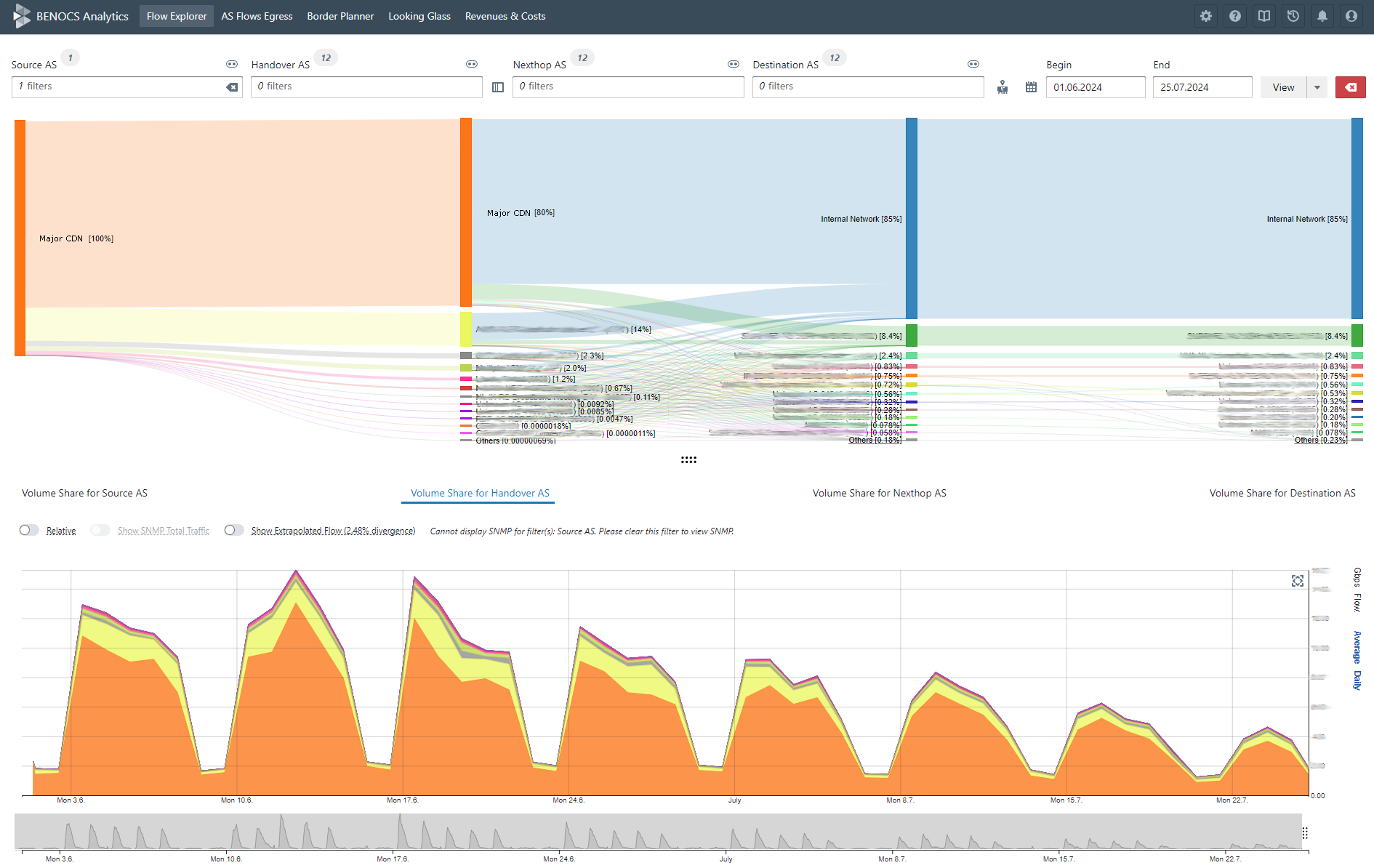About SURF
SURF is the national research and education network (NREN) of The Netherlands. As a collaborative organization, SURF works with members of Dutch education and research institutions to ensure and increase the quality, efficiency and security of their nationwide networks.

Challenges
SURF had held a direct interconnect with a well-renowned CDN since 2019. At the end of 2023 the IP Transit providers of SURF changed, and since then, SURF had been receiving 48% of the CDN traffic indirectly through one of the new transit providers. Without BENOCS Analytics, they didn’t have the visibility of the direct vs. indirect traffic, so this was an undiscovered challenge – or rather, a missed chance.
Solution
BENOCS Analytics offers network operators full visualization off all traffic traversing the network, Having seen the capabilities it offers, the team at SURF decided to invest in the tool to functionally and financially optimize their network. Specifically the ability to see direct and indirect traffic was an integral part of the decision for the peering team: a Sankey diagram that displays the traffic flow, as well as a time series and statistical table that reveal traffic levels over time, would uncover various opportunities to optimize their peering strategy.
Implementation
After Flow Analytics was deployed, BENOCS’ data quality assurance team noticed the large amount of indirect traffic from a major CDN and informed Joachim, network engineer at SURF. Joachim was already in contact with the BGP Engineer of the CDN in question, and suggested corrections to the BGP announcements to steer traffic towards the direct interconnection and not via a transit provider.
Results and Benefits
After this change was implemented by the CDN end of May 2024, the direct traffic jumped from 42% to 80%, an absolute increase of 90%. Consequently, the indirect traffic fell, from 58% to 20%, bringing the traffic flow to the IP upstream provider below the Committed Data Rate (CDR). This shift in traffic to the direct interconnection with the CDN network saved substantial monthly costs for SURF.

Future Plans
In the coming months, SURF will cooperate with BENOCS to implement BGP-LS functionality within the product. For SURF this provides a secure and scalable way to update the network topology within BENOCS automatically, and be able to visualize backbone traffic.
Furthermore, SURF will work with BENOCS to look at traffic in multiple VRFs and analyze traffic flows in separate services that run on the network.
Conclusion
Implementing BENOCS Analytics was a lightbulb moment for SURF: upon seeing the amount of indirect traffic entering their network, the Dutch NREN was able to adjust their peering accordingly. This resulted in substantial financial savings and optimized traffic flow. BENOCS Analytics is now an essential tool in SURF’s peering management and strategy.

